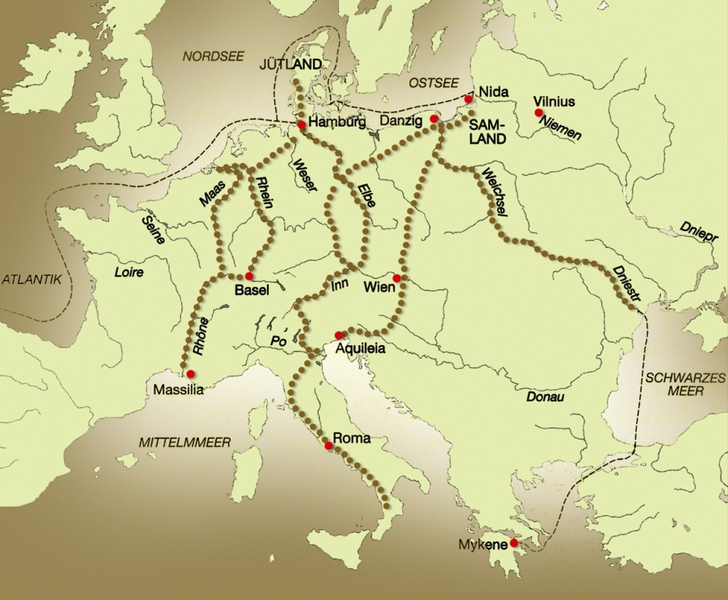
To truly comprehend the authenticity and majesty of natural Baltic Amber, it is most beneficial to take an historic journey back in time to a period scientists have identified as the New Stone Age when they believe Amber was traded for the first time as a valuable possession. That period of time was 3400 BC - 2400 BC. No question that this is “ancient history.”
As with all monumental discoveries, the beginning is often with major excavations. Such is the case with Baltic Amber. The earth succumbed to tedious, carefully conducted exploration and Jutland, the Eastern Baltic Coast region, and central Europe as well as Egypt bore testimony to the importance of Amber in ancient times. The pharaoh tombs in the Tethys pyramid revealed Amber beads discovered by the German archaeologist, Heinrich Schliemann, in is excavation of Troy between 1871 and 1890. Thorough research by scientists concluded that the Baltic Amber of which these beads were comprised dated back to the Baltic Coast circa 3000 BC. Schliemann also uncovered additional Amber on Create Island in cupola tombs which originated in the Mycenaean period, 1600-800 BC.
The Baltic Amber journey continues into the first three centuries of AD as the Roman Empire and its colonies heavily traded in Amber establishing what is known as the “amber road” and Greece, as well, embraced Amber as a powerful treasure. Toward the end of the 3rd century, the Dniester, Prut, and Dnieper Rivers helped to increase trade routes for Amber in Roman colonies as well as Slavic settlements on the coast of the Black Sea followed by the Byzantine Empire as well as Arab countries.
And then the Amber history takes a most definite turn in the 12th century. The Baltic Coast settlements were invaded by crusaders and they controlled not only Amber excavation but the vast majority of Amber trade. In the year 1264, an agreement was set forth by the Sambian Archbishop dictating that all lands containing precious Amber were entirely the property of the Order of the Knights of the Cross. Under this agreement, the Archbishop was tithed one third of all Amber. As a result of this same agreement, the local residents who, for centuries, had traded in Amber were completely disenfranchised of their rights. In fact, the designated officers of the Order were to full possession of Amber found by anyone and punishments were meted out for any violation. A tiny quantity of Amber could mean imprisonment or worse.
Of course there’s much more to this story of history and the incredible wonders of natural Baltic Amber. And we won’t disappoint – stay tuned for more exciting details in the near future.
Sincerely
Svajunas Petreikis
E-mail svajunas@amberartisan.com